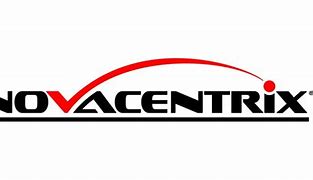We are changing our name from Blue Wolf to QIC Global
We are changing our name from Blue Wolf to QIC Global
The ISO 45001 certification standard establishes the global health and safety management system. It designs the most effective set of clauses for organizational use. The set helps to implement effective strategies to identify workplace-related risks and prevent their occurrences. The international health and safety standard ISO 45001 assists companies in taking precautionary measures and corrective measures to improve the present safety management system.





ISO 45001 is the global standard-setting benchmark for occupational health and safety management. It aims to assist the management in retaining employees by providing them with an effective safety framework. ISO 45001 applies to companies of any size and any type. It is a mandatory requirement for construction, hospitality, manufacturing, mining, agriculture, and healthcare. With the standard, management efficiently reduces accidents at the workplace. Thus, it helps to ensure high employee morale.
The standard is built on 10 clauses, which enables an organization to develop a stringent risk management system to protect human resources. To comply with the government rules for employee health and safety management, ISO 45001 is a necessity. By adopting the standard, the following organizational practices can be optimized -

ISO 45001: 2018 is the standard establishing specifications of the Occupational Health and Safety Management System (OHSMS), and its implementation assists companies in establishing safer working environments and minimizing accident or health-related risks. Businesses must have vigorously implemented a proactive plan that is systematic in employee health and safety to meet the standard.
Important compliance requirements of ISO 45001:2018 are:
Complying with these requirements, organizations will not only implement standards of ISO 45001:2018 but will also improve the well-being of employees and establish a good safety culture.
In their certification audits, organizations have non-conformities when OHSMS is not entirely aligned with ISO 45001:2018 requirements. Such gaps may impact workplace safety and certification performance.
Typical non-conformities are:
Through this, the organizations enhance their OHSMS performance, minimize the risks of weekend disasters in the workplace, and enhance their likelihood of obtaining certification or retaining it.



“I want to express my sincere appreciation for your support during our recent ISO audit.”


“One of the best business decisions I think we've made in the entire time we've been here in the company.”


We make auditing your ISO Standards easy. We know audits can be stressful. We’ll take the stress out.


“What seemed like a very intimidating process … was made simple … and [has] elevated our quality and safety program to another level.”


“…our staff feel comfortable talking to [the auditor]… makes you feel like you are working together”


“…Relaxed, didn't feel pressured..."


“I would just say, if you want the best and you want to things done quickly and accurately that I’d go with Blue Wolf. The service was great. Again, just to the point, very speedy, not a lot of fluff around things. We just got to work and got it done and that was the objective.”


“Your approach [to the audit process] is by far superior than any other audit I’ve ever been through. The contrast was night and day”


“There was so much going on at the time of the audit that I just wanted to go back to the audit, it was more relaxing”


“I don’t ever want to experience an audit a different way”


“If everybody could have an audit experience like this, more and more people would actually consider an ISO certification”


“I learned a whole lot from what we just went through with [the auditor] that I didn’t even understand about the standard before”


“Our experience has been that this process in working with the auditors has shown us more ways to improve internally than what we expected”


“What seemed like a very intimidating process … was made simple … and [has] elevated our quality and safety program to another level.”


“…Relaxed, didn't feel pressured..."


“…our staff feel comfortable talking to [the auditor]… makes you feel like you are working together”


“It’s a very smooth and very clear process. Definitely recommended.”


"The auditor was very knowledgeable, very understanding, very helpful."


“Would give them a 10 out of 10 and would highly recommend them to anybody looking to get ISO certification in the future.”


“I found Blue Wolf to be the Cheapest and most experienced in my eyes ‘cause all of the price ranges were higher than Blue Wolf, so I stuck with Blue Wolf. Their quality was very high as well.”


“The service provided by Blue Wolf has been second to none.”


“Blue Wolf streamlined the entire process. They were very easy to communicate with and work with, very cordial, and just an all-around good experience.”


“Blue Wolf makes a great partner for not only getting but maintaining your ISO certifications.”
Quality Management Systems
Environmental Management Systems
Occupational Health and Safety Management Systems
Information Security Management Systems
The Information Technology (IT) Service Management System Standard for earning global recognition!
Global Quality Management Standard for Medical Devices
Energy Management System efficiency
Food Safety Management Systems
Anti-Bribery Management System
Business continuity management system
The Privacy Management Standard for corporate documents
The education management standard for a better learning experience!